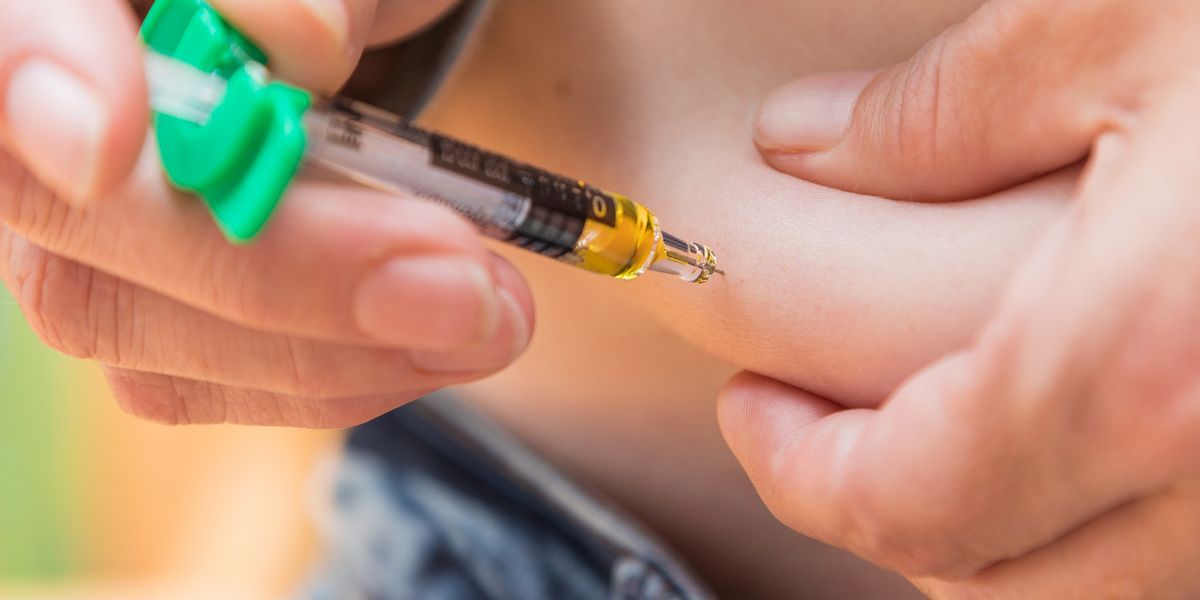Glucose responsive insulin (GRI), known as ‘smart’ insulin, is a promising treatment option for people with diabetes that, if successful, could result in blood glucose levels remaining within range during the day, and no more worrying about low or high blood sugar.
Scientists worldwide are working on administering smart insulin in different forms, such as capsules and patches. But the research is in its infancy – in many cases, human testing of smart insulin is not scheduled for several years.
GRI works in the body by automatically reacting to blood sugar fluctuations, essentially the same as normal insulin-producing cells in people without diabetes. GRI would therefore take the hassle out of consistently managing blood sugar levels and also enable tighter blood glucose control.
If smart insulin ultimately proves successful, it could be revolutionary for treating diabetes.
What is smart insulin?
Smart insulin is a next-generation insulin that automatically responds to changing blood glucose levels. The lower or higher blood sugar levels are, less or more insulin is released, respectively.
The insulin, whether taken as an injection or pill, keeps blood glucose levels normal throughout the day. This eliminates not just hypoglycemia and hyperglycemia but also multiple daily injections and carb counting.
All smart insulin projects are at a very early stage and, in some cases, the drug is still being tested in animal studies.
Smart insulin cells
One of the earliest smart insulin projects began back in 2003 when Todd Zio, an MIT researcher, founded a company called SmartCells Inc, which soon gained backing from JDRF as it sought to develop GRI.
In 2011 US pharmaceutical company Merck acquired SmartCells. Their MK-2640 insulin is the first smart insulin to be tested on humans, with results still pending following completion of phase I of III in July 2016. [246]
Most smart insulin molecules are designed to circulate longer in the bloodstream than existing insulin, and increased funding in recent years means that more projects are experimenting with how these molecules are administered.
In 2017 an Ohio-based university was awarded a $2.5 million research grant to design a novel class of GRI molecules that would stick to the inside of the skin until high blood sugars are detected. These molecules are designed to be more responsive to blood sugar levels, for example, by preventing too much insulin from being absorbed when blood sugars are low.
Smart insulin patch
The University of North Carolina has been working on a smart insulin patch for several years.
In 2015 NC researchers reported that their patch, which rests on the outside of the body, will use a system of micro-needles to automatically detect high blood glucose levels and administer insulin appropriately.
One year later they upgraded the patch to contain live beta cells which can control rising blood glucose levels for roughly 10 hours at a time. Because these beta cells are kept within the patch on the outside of the body, there is no danger of them being rejected by the immune systems of people with type 1 diabetes.
As of 2016 animal trials are continuing, with human clinical trials not expected for a number of years.
Smart insulin capsule
In the UK, progress is being made on a smart insulin capsule that rests inside the body and releases insulin when blood sugars are too high.
The University of Birmingham’s capsule contains molecules that bind to glucose, and when glucose levels are high, the capsule melts away, releasing the insulin.
While JDRF has called this a “life-changing treatment”, it is not expected to be tested in animal trials until 2022.
Other smart insulin projects
| Company / Academic Group | Product | Latest developments |
|---|---|---|
| University of Utah | Ins-PBA-F compound – activates during hyperglycemia, circulates for up to 24 hours | Human testing scheduled within five years |
| Monash University | Glucose-sensing nanoparticles that keep BG levels within range | $1.1m research grant awarded in 2016 by JDRF and Sanofi |
| California researcher Alborz Mahdavi, Ph.D | Protomer – a startup that will develop insulin analogs with engineered glucose responsivity | Also received research grant in 2016 from JDRF and Sanofi |
| Eli Lilly | Smart insulin that closely mimics BG control in healthy individuals | Acquired smart insulin technology from Glycostasis, Inc in 2016 |
Will smart insulin prove worthy of the hype?
Currently, the “best case scenario” of smart insulin is extremely promising for people with type 1 diabetes and insulin-treated type 2 diabetes.
But with the first generation of these drugs still in very early development, it remains to be seen whether smart insulin can deliver somen, let alone all, of the anticipated benefits in humans.
JDRF has drawn up a draft set of characteristics for the “ideal” GRI compared to “first generation” GRI:
| First Generation GRI | Ideal GRI |
|---|---|
| Helps with meals, but may still require basal insulin | No other insulin use required |
| Once or twice daily injection | Once daily injection |
| Glucose monitoring 2-3 times daily | Glucose monitoringg 0-1 times per day |
| A1c reduced of 0/5%, similar effects to current insulins | A1c reduction of ~0.7%, superior to current insulins |
| ~60% time in range (70-130 mg/dl). Others suggested that this range was too optimistic and proposed a target of 80% time in the 90-150 mg/dl range as a safer and more realitic alternative | ~80% time in range (70-130 mg/dl) |
| 0-1 hypoglycemic events per week. Participants agreed that there needed to be more clarity around this definition and suggested that under five mild events per week might be more appropriate | 0-1 hypoglycemic events per month |




